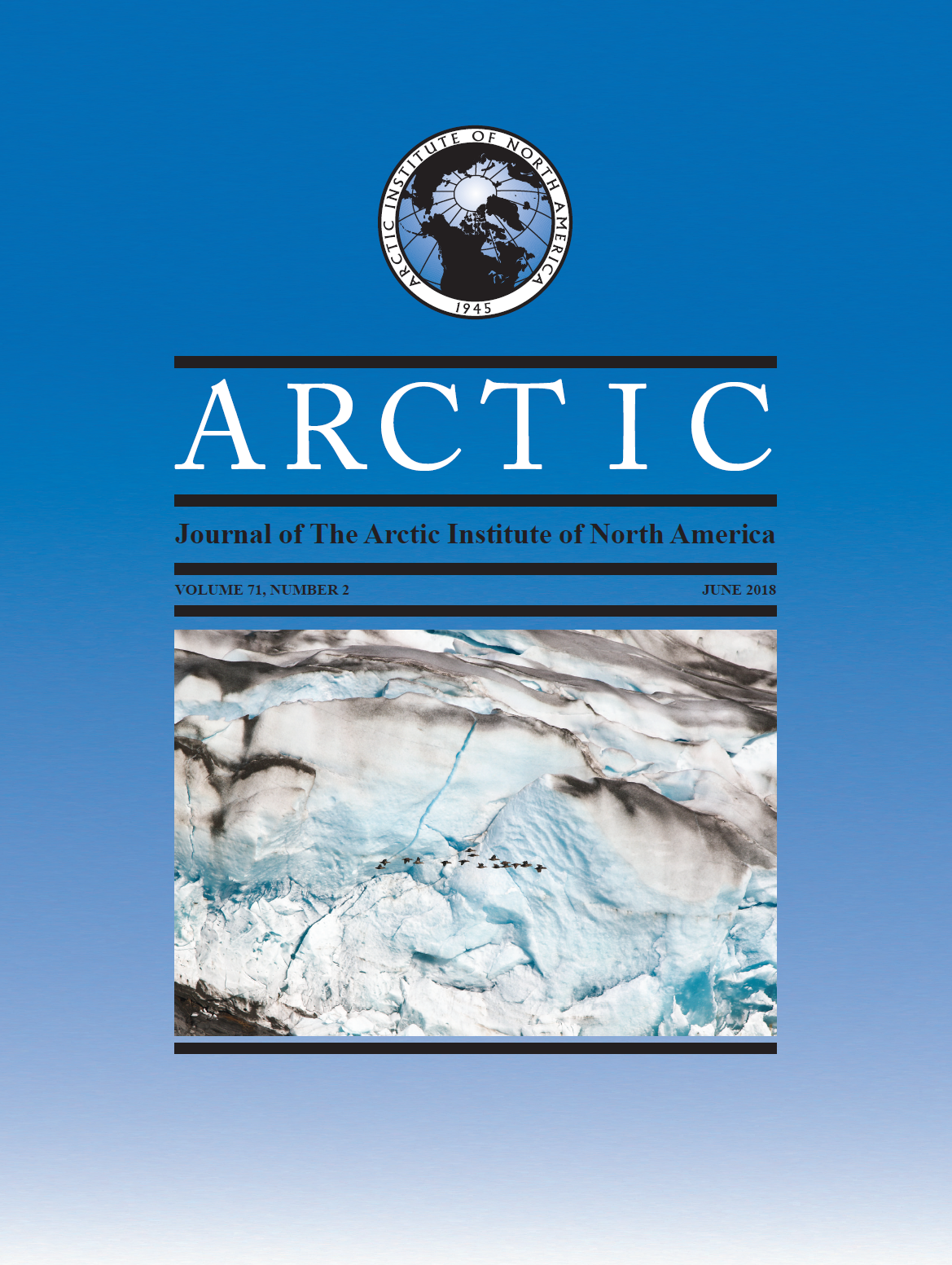A Paleoenvironmental Study Tracking Eutrophication, Mining Pollution, and Climate Change in Niven Lake, the First Sewage Lagoon of Yellowknife (Northwest Territories)
DOI:
https://doi.org/10.14430/arctic4720Keywords:
sewage lagoon, Arctic, paleolimnology, sterols, stable nitrogen isotopes, diatoms, chironomids, shallow lakesAbstract
Niven Lake was the first wastewater disposal site for the City of Yellowknife (Northwest Territories, Canada), receiving domestic sewage for more than 30 years. Here, we used a high-resolution sediment core to track past sewage inputs to Niven Lake by comparing changes in sedimentary sterols and three diagnostic ratios for human fecal contamination, as well as biological assemblages and overall lake production, with the known history of sewage inputs to the lake from 1948 to 1981. Coprostanol, often considered the best indicator of human fecal contamination, increased by ~8% between depths of 7.5 cm and 5 cm (~1950 to 1981) and was more reliable in tracking sewage contamination than diagnostic sterol ratios. Muted responses in subfossil diatom and chironomid assemblages were noted during the time of sewage inputs, and similar responses have been reported in other eutrophic Arctic sites, as well as in many macrophyte-dominated shallow lakes in general. More marked shifts in diatoms and chironomids occurred a decade after the end of sewage inputs, in the 1990s, a time that closely aligned with the warmest years on record for Yellowknife. This post–sewage era response was indicative of anoxia and possibly of positive feedback from internal phosphorus loading. The response may have been facilitated by recent climate warming, resulting in a lagging recovery from eutrophication. Changes in the diatoms and chironomids of Niven Lake were also indicative of metal pollution, suggesting that the lake has experienced the compounding effects of arsenic contamination from nearby gold mining.
Downloads
Published
Issue
Section
License
Copyright (c) 2018 ARCTIC

This work is licensed under a Creative Commons Attribution 4.0 International License.


